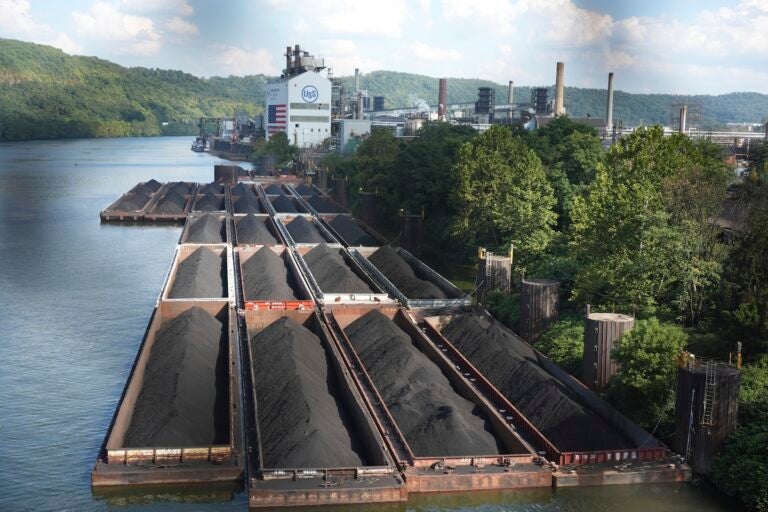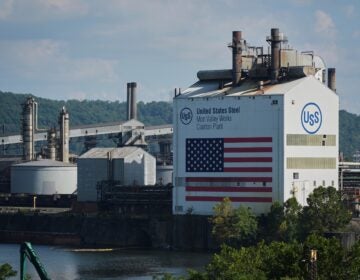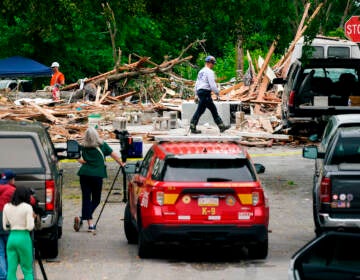An explosion at a U.S. Steel plant in Pennsylvania has killed 2. Here’s what to know
The plant, Clairton Coke Works, is one of four major plants in Pennsylvania owned by U.S. Steel, an icon of the domestic steel industry and American industrialization.

The Clairton Coke Works, a U.S. Steel coking plant, is seen Monday, Aug 11, 2025, in Clairton, Penn. (AP Photo/Gene Puskar)
An explosion at a U.S. Steel plant south of Pittsburgh killed two people and injured more than 10 others. The CEO has vowed to find out what caused Monday’s blast while the workers’ union says it will make sure there’s a thorough investigation.
The plant, Clairton Coke Works, is one of four major plants in Pennsylvania owned by U.S. Steel, an icon of the domestic steel industry and American industrialization. The company is now a subsidiary of Japan’s largest steelmaker, Nippon Steel, after a nearly $15 billion deal was finalized in June. The combined company is the world’s fourth-largest steelmaker in an industry dominated by China.
Democratic Gov. Josh Shapiro and plant executives vowed Tuesday to do whatever is necessary to prevent it from happening again.
“We owe them an answer for what happened,” Shapiro said of the workers. “We owe them the answers to their questions, and we owe them to never forget the sacrifices that occurred here yesterday.” Before arriving at a news conference, he met with family members of a worker who died.
Here’s what to know about the explosion:
Blast felt nearby
Allegheny County Emergency Services said a fire at the plant started around 10:50 a.m. Two loud booms that followed were initially thought to be subsequent explosions, but U.S. Steel’s chief manufacturing officer, Scott Buckiso, said those noises came from the activation of two relief pressure valves — a safety mechanism that operated as expected.
The blast could be felt in the nearby community in the Mon Valley, a region synonymous with steel in Pennsylvania, and county officials warned residents to stay away from the scene so emergency crews could respond.
One worker was rescued from the smoldering rubble hours later. Hospital officials have not released his condition as of Tuesday afternoon.
The Allegheny County Police Department said five people were hospitalized in critical but stable condition Monday night, and five others had been treated and released. Multiple individuals were treated for injuries at the scene, but the department said it did not have an exact number.
Past explosions
The plant converts coal to coke, a key component in the steel-making process. It’s the largest coking operation in North America and employs 1,400 workers.
Coke is made by baking coal in special ovens for hours at high temperatures, which removes impurities that could otherwise weaken steel. The process creates what’s known as coke gas — a lethal mix of methane, carbon dioxide and carbon monoxide.
Clairton Coke Works has had other explosions and fatal accidents:
1. In September 2009, a maintenance worker was killed in an explosion.
2. In July 2010, an explosion injured 14 employees and six contractors. Afterward, the Occupational Safety and Health Administration fined U.S. Steel and a subcontractor $175,000 for safety violations. U.S. Steel appealed its citations and $143,500 in fines, which were later reduced under a settlement agreement.
3. The last death at the plant was in 2014, according to online OSHA records of workplace fatalities. A worker was burned and died after falling into a trench.
4. In February, a problem with a battery at the plant led to a “buildup of combustible material” that ignited, causing an audible “boom,” officials said. Two workers received first aid treatment but were not seriously injured.
Pollution concerns
After Monday’s blast, the county health department initially told residents within 1 mile (1.6 kilometers) of the plant to remain indoors and close all windows and doors. The department lifted the advisory after its monitors didn’t detect levels of soot or sulfur dioxide above federal standards.
In 2018, a Christmas Eve fire damaged pollution control equipment and led to repeated releases of sulfur dioxide, according to a subsequent lawsuit. The fire prompted Allegheny County to warn residents to limit outdoor activities. Residents said it was hard to breathe for weeks afterward and that the air felt acidic and smelled like rotten eggs. U.S. Steel settled the lawsuit last year with an agreement to spend $19.5 million in equipment upgrades and $5 million on local clean air efforts and programs.
Dr. Deborah Gentile, the medical director of Community Partners in Asthma Care, studied asthma levels after the fire and found twice as many patients sought medical treatment.
In 2019, U.S. Steel agreed to settle a lawsuit regarding air pollution from Clairton for $8.5 million.
A storied history and new ownership
Founded in 1901 by J.P. Morgan, Andrew Carnegie and others, U.S. Steel has been an icon of the American steel industry that dominated the world market until Japan, then China, became preeminent steelmakers over the past 40 years.
Its steel has helped build everything from the United Nations headquarters in New York City to the New Orleans Superdome.
The acquisition by Nippon Steel took more than a year to come together after U.S. Steel shareholders approved it, as the parties surmounted obstacles created by national security concerns and presidential politics in a premier battleground state.
The deal includes what is known as a “golden share” provision that gives the U.S. government the power to appoint a board member and a say in company decisions that affect domestic steel production and competition with overseas producers. The combined company is the world’s fourth-largest steelmaker in an industry now dominated by China.

Get daily updates from WHYY News!
WHYY is your source for fact-based, in-depth journalism and information. As a nonprofit organization, we rely on financial support from readers like you. Please give today.




